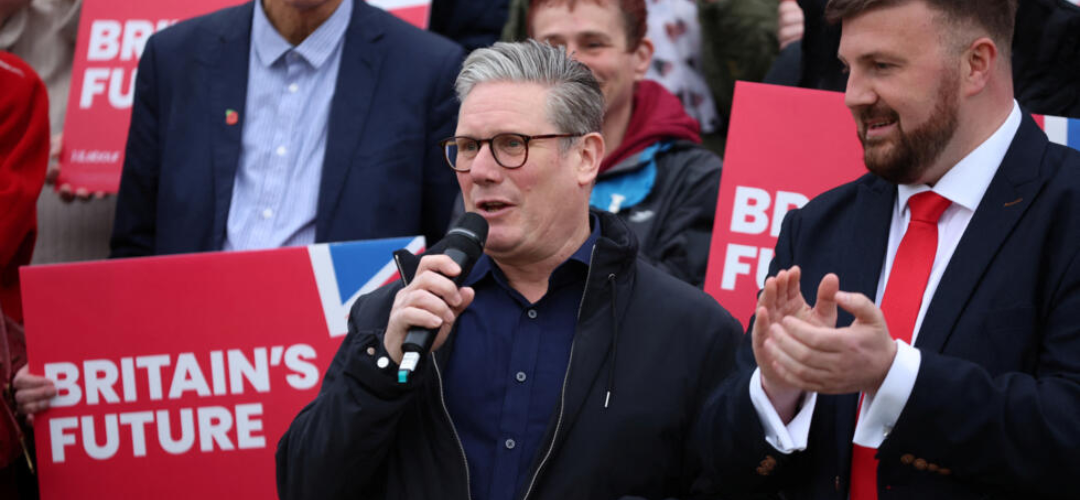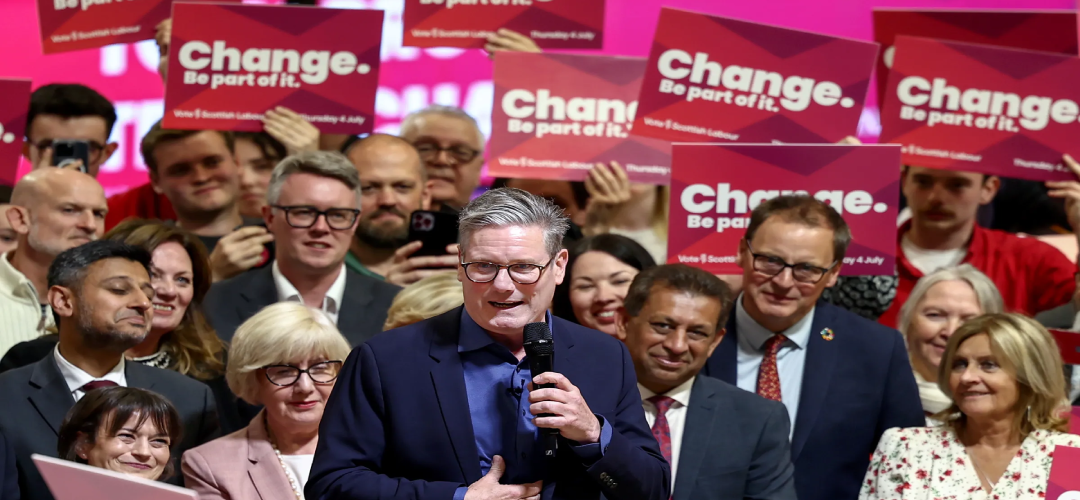The new Labour government is full of ambitious plans to revitalise the UK. Is it the enthusiasm of the uninitiated?
After a long hiatus, a delighted Labour Party was swept back to power. In politics, 14 years is a very long time, and as the celebrations fade away comes the realisation that a landslide victory comes with a heavy weight of public expectations. They must quickly get to grips with the harsh reality of Europe under an economic downturn and a debilitating conflict that is sucking away precious treasure from more worthwhile investments.
Background
Since the last general elections, it has been a tumultuous period in British politics. As the flush of BREXIT faded away, Boris Johnson quickly lost the public confidence bestowed upon the Tories in a sweeping win. Whether the Tory government succeeded in cutting the cords of BREXIT with the least amount of pain inflicted is something on which the jury is still out. Its performance, or lack thereof, did not secure Boris Johnson or his short-term successor their stint in 10 Downing Street for long. Even for Rishi Sunak, the fallback prime minister, when all seemed lost, it was a roll of dice to call the snap elections. Of course, here, too, the Conservative party took the wrong call! In their wake, they have left behind a cost-of-living crisis, an economy still not away from the pitfalls of BREXIT and mounting anger against immigration-both legal and illegal.
With spiralling living costs, high inflation, a fund-starved NHS down on its knees and local governments staring at default, it would be an understatement to state that the new Labour government faces a mountain of a task ahead of them!
The new Labour government faces economic challenges like spiralling living costs, inflation, an overburdened NHS, and fiscally struggling local governments.
Mr. Kier Starmer, a former public prosecutor and human rights lawyer, is undoubtedly a competent administrator and a leader. His initial impressions have been positive. He has amply made clear his approach-economy will be the key result area. This is not surprising as globally, rich and poor nations remain obsessed with their economy.
The Labour Party has made its approach clear – it’s a government that intends to play a key role in the economy. This seems to be a global trend, as witnessed in India, Brazil, Malaysia, many European countries, and the US. This increasing government intervention reflects long-practised Chinese economic policies that rely on top-down planning and generous financing programs.

Analysis
From their initial utterings, it is possible to discern the road map the Starmer government will likely adopt.
The housing market is going to attract a lot of investments. The target is to build 1.5 million homes in 5 years, which would require a rate of house building not seen since the 1960s. Since the plan relies mainly on private builders, market conditions will have to make it commercially viable, which could hinder achieving the ambitious target.
Next would be NHS reforms; the embarrassingly long backlogs have to be nullified with additional hirings and the creation of facilities to tend to the long line of waiting patients. There are talks of NHS staff being pressed into service over the weekends and outsourcing to the private sector to expand capacity.
With tempers rising in Europe as Putin gains strength and far from being exhausted after nearly 30 months of incessant bloodletting, Ukraine remains at the forefront. In synch with Washington, the UK has been at the forefront of supporting Ukraine. Historically, the UK has been a leading spender on defence in NATO. This will only increase as NATO talks of reducing their reliance on the U.S. for their security; a hike in defence spending to 2.5 per cent of the GDP is on the cards.
On the economic front, the party plans to facilitate wealth creation. The economy is hamstrung with lagging growth and low productivity and investment. The new government aims to boost investment, which has been low since 2016 and increase funding for training, skill development, and technology to improve productivity. However, even if it does manage to spur investment, it will take years to pay off.
One of the major challenges that the Labour government will face is financing its increased public spending program. Taxes and public debt are already high, with public services low on funds, and increasing taxes could irk the public.
It is proposed to raise public revenue by changing the non-domicile tax status of wealthy people, cracking down on tax avoidance, introducing windfall tax on energy, and imposing VAT on private schools. The 20 per cent VAT on private school fees will be used to pay extra teachers in state schools. However, this could unduly affect middle-income parents concerned about being edged out of private schooling.
The Labour government under Starmer has promised to reduce net immigration, showing that it is not a radical leadership. However, it plans to scrap the Rwanda scheme and spend 75 million pounds allocated to the programme on a new Border and Security Command that will aim to strengthen border security.
Its major spending commitment has been 23.7 billion pounds towards green initiatives, more than the spending plan for health or education. Green policies are an integral part of the party’s plans for growth and wealth creation. It intends to boost renewables and nuclear power, create 6,50,000 jobs by 2030, and secure clean energy supplies.
It particularly plans to support wind power, which it believes will help the economy grow. The fact that it removed the ban on onshore wind just a few days into its tenure shows that wind energy is a priority. It has promised to double onshore turbines and quadruple offshore turbines by 2030.
The party is serious about its green goals and plans to prohibit the sale of petrol and diesel cars from 2030 onwards. The challenge will be getting enough people to switch to electric cars; demand plateaued last year.
At the foreign policy level, the government has been under pressure to demonstrate a tougher stance against Israel. Consequently, it calls for an immediate ceasefire with Gaza and has pledged to recognise a Palestinian state towards a peaceful two-state settlement. It also favours closer ties with the EU.
For India, it means that the free trade agreement (FTA) that has been in the works for two years could finally see the light of day. The agreement features mutual tariff reductions on various goods such as cars, clothes, alcoholic beverages, and medical instruments. The Labour government has made it clear that it intends to finalise the FTA. The party’s manifesto also says it will seek a new strategic partnership with India. Starmer is more pro-India than his predecessor, Jeremy Corbyn, who called for international intervention in Kashmir. Starmer recognises the importance of the UK’s Indian population, the country’s largest immigrant group. Hopefully, under Starmer, the UK government will take a tougher stance towards anti-India elements freely proliferating in the UK.
Assessment
- The new Labour government has ambitious aims to bolster home building, investment, and productivity while also taking measures to implement green goals and tackle the NHS backlog. With no improvement in the geopolitical or geoeconomic situation, this optimism may have to be somewhat tapered down in times to come.
- On the one hand, its comfortable majority in parliament makes it easierto implement policies. On the other hand, its plans to play a key role in the economy could hit a wall if it cannot achieve the funding, given that public debt and taxes are already high.
- The UK remains an important engine of growth regionally and globally, and it can be hoped that with a revitalised Labour at the helm, the country will take its rightful leadership position amidst the comity of nations.




